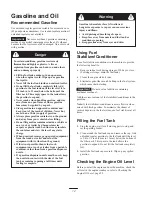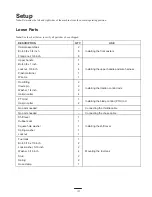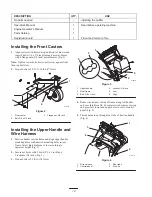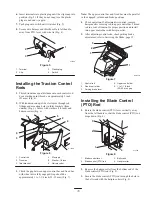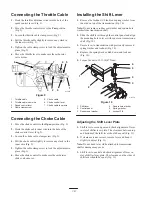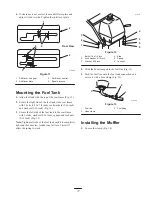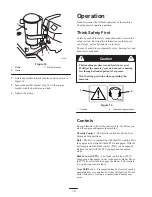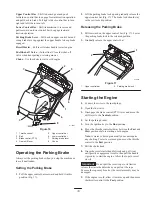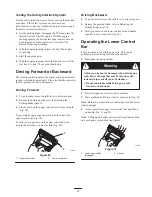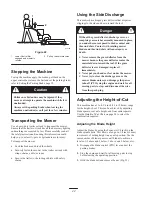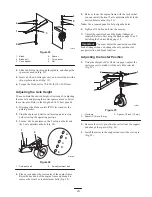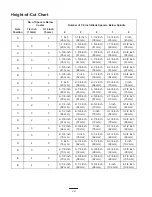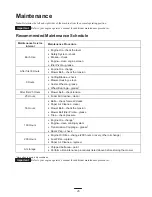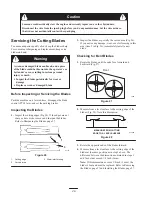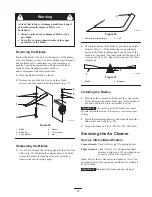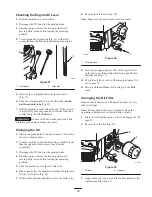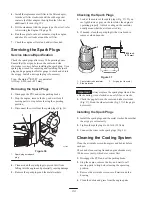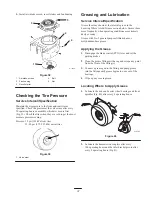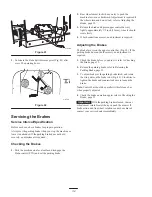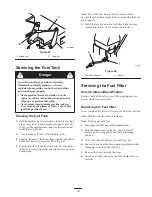
26
Caution
Someone could accidently start the engine and seriously injure you or other bystanders.
Disconnect the wire from the spark plug before you do any maintenance. Set the wire aside so
that it does not accidentally contact the spark plug.
Servicing the Cutting Blades
To ensure a superior quality of cut, keep the blades sharp.
For convenient sharpening and replacement, keep extra
blades on hand.
A worn or damaged blade can break, and a piece
of the blade could be thrown into the operator’s or
bystander’s area, resulting in serious personal
injury or death.
•
Inspect the blades periodically for wear or
damage.
•
Replace a worn or damaged blade.
Warning
Before Inspecting or Servicing the Blades
Park the machine on a level surface, disengage the blade
control (PTO) lever, and set the parking brakes.
Inspecting the Blades
1. Inspect the cutting edges (Fig 26). If the edges are not
sharp or have nicks, remove and sharpen the blades.
Refer to Sharpening the Blades, page 27.
1
2
3
m–151
Figure 26
1.
Cutting edge
2.
Curved area
3.
Wear/slot forming
2. Inspect the blades, especially the curved area (Fig. 26).
If you notice any damage, wear, or a slot forming in this
area (item 3 in Fig. 26), immediately install a new
blade.
Checking for Bent Blades
1. Rotate the blades until the ends face forward and
backward (Fig. 27).
1666
Front
Figure 27
2. Measure from a level surface to the cutting edge of the
blades (Fig. 28). Note this dimension.
MEASURE FROM CUTTING
EDGE TO A LEVEL SURFACE
m–2558
Figure 28
3. Rotate the opposite ends of the blades forward.
4. Measure from a level surface to the cutting edge of the
blades at the same position as in step 1 above. The
difference between the dimensions obtained in steps 1
and 2 must not exceed 1/8 inch (3 mm).
Note: If this dimension exceeds 1/8 inch (3 mm), the
blade is bent and must be replaced. Refer to Removing
the Blades, page 27 and Installing the Blades, page 27.

